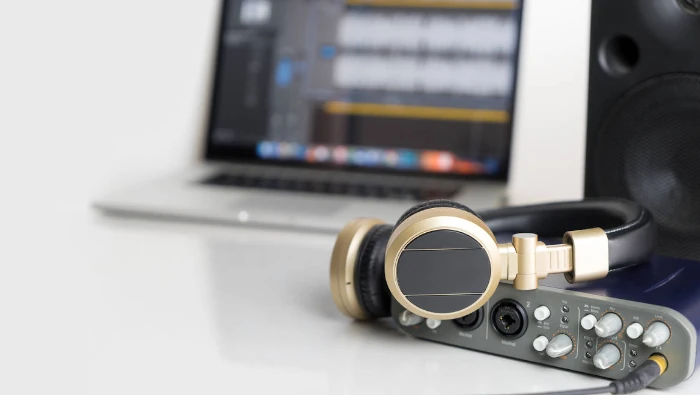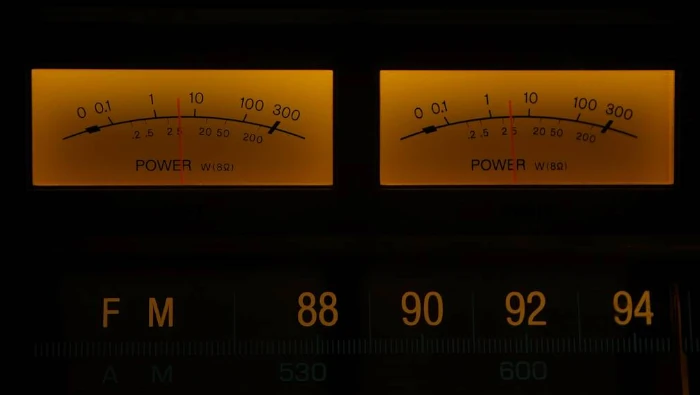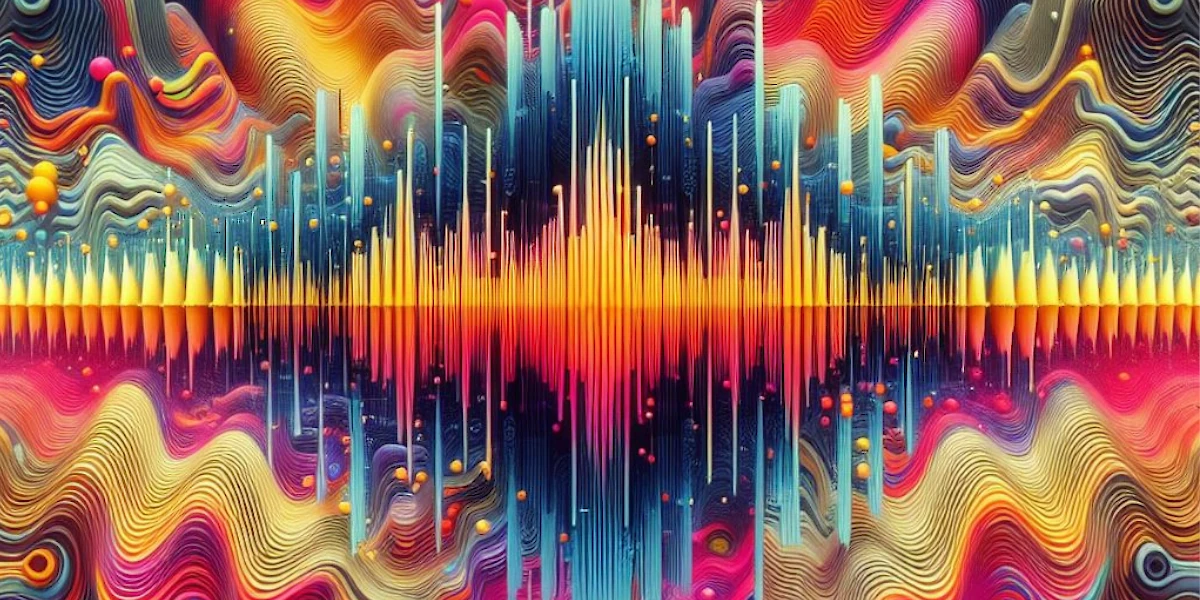Hey there, audiophiles and home studio heroes! Ever feel like your perfect take was hijacked by some pesky audio noises gremlins? You know what I’m talking about—those random pops, buzzes, and hisses that sneak into our recordings. It’s almost as if our tracks need a passport to outer space, given how often unwanted noise sends them into the stratosphere!
Today, I’m going to be your sonic superhero, guiding you through the mysterious cosmos of audio noises. But fear not! We’re not just going to bemoan our fates and accept these sonic intruders. Instead, we’ll strategize on ways to banish them from our beloved tracks. Because let’s be honest, we all want that crisp, clean sound that makes our music shine, right?
Whether you’re noticing that your latest podcast sounds more like a symphony of static or your song’s vocal track has unintentionally added some abstract noise art, I’ve got your back. And, if you stick with me, I’ll even let you in on a secret or two from the Formula HSS slogan vault: “More Control = High Quality“. Now that’s music to my ears!
So, grab your favorite headphones, and let’s dive headfirst into understanding these audio invaders and, most importantly, how to kick them to the curb!
Stay tuned, because by the end of this journey, you’ll be equipped with the knowledge to turn those terrible noises into nothing but distant… silence.
Understanding Audio Noise Types

Hey there, audio aficionados! Let’s dive into the buzzing world of audio noises you might encounter in your home studio endeavors. Ever feel like your recordings might just rocket off to interstellar realms? Well, before we start looking for a space helmet, it’s important to understand what we’re dealing with.
Saturation: The Point of No Return
First on our list is the dreaded ‘saturation’ or as some might say, “the audio has cracked” or “burst.” Imagine trying to fill a glass with water but you keep pouring until it overflows – that’s pretty much what happens with audio saturation. Sad news here, my friends: if your recording clips because the equipment was pushed too hard, there’s not much that can be saved. It’s like spilled milk, but worse, there’s no use crying over lost data. This continuous peak of electricity is akin to shouting into a void – no real information is left to recover.
The Cosmic Hiss: Universal White Noise
Moving from a studio horror show to a cosmic phenomenon, let’s talk about white noise from the vast unknown – yep, actual space. And no, we don’t need to rebrand our studio as “Home Studio Astronomy” just yet, even though it has a certain ring to it, doesn’t it? In all seriousness, this background noise is the static you hear when there’s no signal, and it’s pretty common. It sneaks into your recordings uninvited, often as subtly as a British spy.
However, we don’t get our knickers in a twist unless this spacey intruder floats above -50 decibels. Chill vibes only, because our standard considers anything below this threshold as acceptable background noise.
RF Interference: The Unseen Audio Nemesis
Now, bringing our telescopes back to Earth, let’s chat about radio frequency (RF) noise. Today, we’re on an astronomical roll, aren’t we? Believe it or not, there are countless radio waves zipping around at various frequencies. Some are so low that, theoretically, we could hear them with a little audio wizardry since they fall within our hearing spectrum.
I’m itching to make a video to showcase these radio waves – including a fascinating case where RF interference made a cameo in a world-famous artist’s album, slipped onto the vinyl, and got sold to millions of unsuspecting fans. Talk about an unintended feature!
But hey, if you’re up against noises like these, keep your cool. Many of these unwelcome guests can be shown the door before you even hit record.
So grab your sonic screwdrivers; we’re about to learn how to evict these audio squatters and clean up our recordings. Stay tuned for the heroic plugins and savvy strategies that’ll transform your home studio from a wild audio jungle into a serene sonic sanctuary!
Tools for Removing Noises from Recorded Audio

Are you tired of pesky noises haunting your audio tracks? Fear not, my fellow sound enthusiasts! There’s a spectrum of sophisticated software solutions designed to cleanse your recordings of those unwanted sounds. Let’s dive into some top-notch noise removal tools that will leave your audio crystal clear.
The Magic of Direct-X Plugins: One of the most potent weapons in your audio repair arsenal is the Direct-X plugin, such as the revered Noise Reduction 2.0 that comes bundled with Sound Forge Pro. This gem is my go-to for mastering, and you’ll be amazed at how it polishes your tracks to perfection.
Wave Goodbye to Audio Imperfections: If you’re wading through the world of Waves Audio, you’re in for a treat. With stellar noise reduction plugins like Z-Noise, X-Noise, and the W43 Noise Reduction Plugin, your quest for pristine audio is about to become a reality. These are not just any plugins; they’re precision tools for eradicating stubborn noises, provided those noises aren’t the result of severe data loss or audio clipping.
Budget-friendly Brilliance: Let’s not forget the Noise Suppressor by the same genius creators, offering an affordable solution for simpler noise issues, like those pesky microphone hisses. As for the more complex buzzes and hums, X-Noise is armed with an array of features designed to tackle them head-on.
Now, I know some of you might be thinking of Audacity, the free audio editor that’s helped many get their start in the audio world. While Audacity does offer some noise reduction capabilities, it’s often a bit simplistic for the more complex issues. So, this time, let’s look beyond just Audacity into the realm of dedicated noise reduction tools that can take your audio from good to outstanding.
Still with me? Great! Let’s move on and talk about how we can prevent these audio gremlins from crashing your recording party in the first place!
Preventing Audio Noise Before It Starts

Remember, folks, an ounce of prevention is worth a pound of cure! This golden nugget of wisdom is incredibly true when it comes to audio production. Preventing audio noise from polluting your recordings at the source can save you a bundle of time and frustration later on. So, let’s dive into the proactive measures you can take to ensure a cleaner sound from the get-go.
Grounding: Your First Line of Defense
You’ve probably heard the buzz about grounding your equipment, and truth be told, it’s not just a buzz—it’s a necessity. A proper electrical grounding can do wonders for minimizing that pesky RF interference plaguing your audio. It’s almost like giving your studio a shield against those invisible waves of chaos. So, make it a priority to ground the computer in your audio setup and any other gear that’s part of the audio capture process. Think of it as creating a serene, noise-free sanctuary for your recordings.
Cable Care: Connect with Confidence
Let’s talk cables, the unsung heroes of any audio setup. High-quality audio connectors are instrumental in transmitting clean sound. Yet, it’s not just about splurging on the fanciest cables; it’s about treating them with care. Regularly inspect your cables for any signs of wear and tear—yes, even those tiny nicks and cuts can let noise sneak into your audio. Avoid cable casualties by keeping them safe from the crushing wrath of your office chair wheels or the unsuspecting stomp of a foot.
More Than Just Equipment: It’s How You Use It
Here’s a little insider tip: throwing money at expensive equipment won’t automatically solve your noise problems. The truth is, gadgets are only as good as the way you handle them. Those state-of-the-art noise suppressor circuits? They can sometimes strip away the very nuances that give your audio its character. The moral of the story? Handle your gear with care, and don’t put all your faith in dollar signs.
By putting these preventative strategies into practice, you’ll be setting the stage for recordings so clear, your listeners might just think they’ve been teleported to an intimate live performance. And isn’t that the dream? Next up, I’ll share how empowering yourself with a little know-how can make a world of difference in your audio escapades.
The Importance of Education in Audio Noise Management

Alright, fellow home studio enthusiasts, let’s get serious for a moment. While we’ve talked about the clever tools and nifty plugins that can help us combat audio noises, there’s something even more crucial to consider: education.
Imagine having a magic wand that not only helps you clean up the existing mess but also teaches you how to avoid creating the chaos in the first place. That’s education for you – it’s your sonic magic wand! By understanding the ins and outs of audio production, you equip yourself with the power to minimize noise issues before they even begin.
Taking the time to learn about audio noise management is an investment in your craft. You’ll start to see the whole production process in a new light. With knowledge as your foundation, you can confidently make decisions that keep those pesky, unwanted sounds at bay. Think of it as becoming the Sherlock Holmes of audio production, where you’re always two steps ahead of the noise culprit.
Being well-versed in noise reduction techniques allows you to troubleshoot with ease. Ever encountered a sudden hum or buzz during a session? Instead of panicking, you’ll adjust your setup, change a cable, or tweak a setting like a pro. And that’s not even touching on the post-production magic you’ll be capable of!
I can’t emphasize enough how empowering it is to possess the expertise to overcome technical hurdles independently. After all, nothing should come between you and pristine audio quality – especially not a bit of RF interference or a static whisper.
Remember, fellow creators, armed with education and a keen ear, you’ll not only refine your productions but also preserve the integrity of your audio recordings. Stay curious, stay educated, and watch as your control over noise transforms your home studio output. Keep on learning – it’s the best tool in your audio arsenal!
Conclusion and Encouragement for Better Recordings
And there you go, fellow audiophiles, we’ve traversed the sonic landscape of unwanted noises and emerged with tools and wisdom in hand. It’s time to say goodbye, but not without a few parting words of encouragement.
Embrace the Journey to Pristine Audio
Remember, every home recording enthusiast encounters a little static along the way. It’s part of the journey to producing audio gold. Trust in the tools and tips shared today, and believe in your abilities to create recordings that resonate with clarity and professionalism.
Keep Learning and Experimenting
Never stop learning or experimenting. Audio work is an art as much as it is a science. So dive into resources like the Home Studio Start’s Blog if you’re curious. Expand your knowledge and continuously refine your skills. It’s through practice and education that we conquer the chaos of unwanted noise.
Prepare for Future Success
Visualize the smooth, clean soundscapes you’ll craft with your newfound insights on noise reduction. Keep an eye out for that exclusive workshop we mentioned—it’s destined to be a game-changer for those hungry to delve deeper.
Stay Connected and Share Your Progress
We’re in this together, so don’t be a stranger. Stay connected, share your progress, and let’s celebrate each other’s victories in the quest for audio excellence. Got a success story or a challenge you overcame? Drop it in the comments or hit us up on social media!
The Final Note
So, friends, it’s not just about removing the noise; it’s about setting the stage for the music and messages that truly matter. Keep shaping your sound, keep aiming for the stars (noise-free), and above all, keep creating!
Until next time, may your recordings be clear, your edits be sharp, and your music always play true to your vision. Good recordings!

